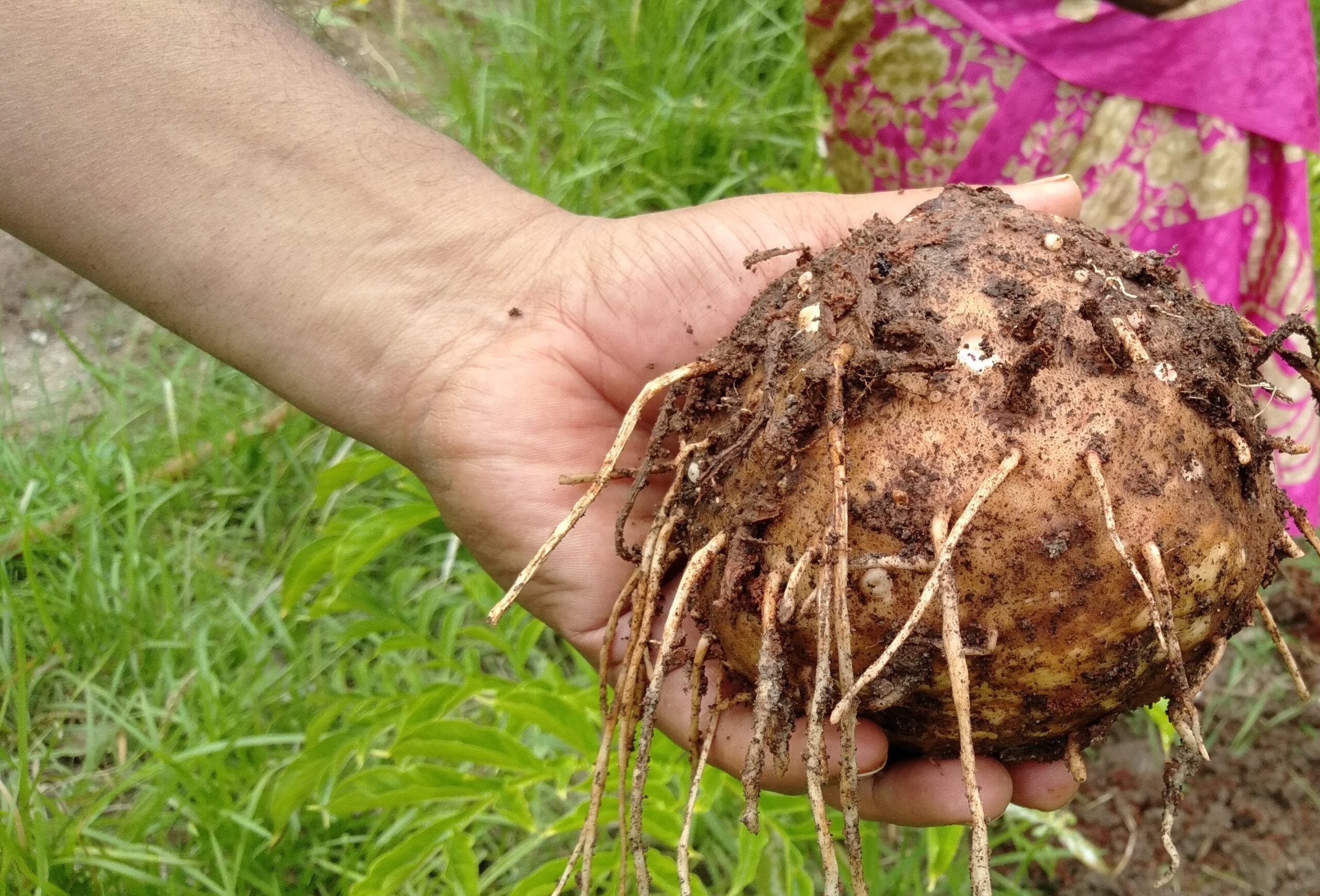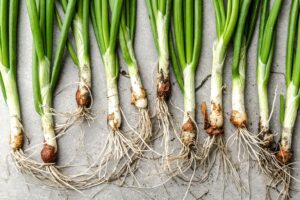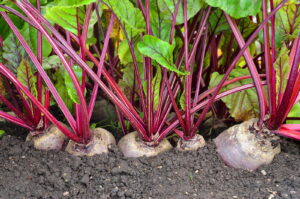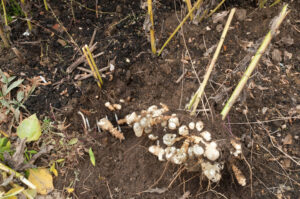How to Grow and Use Culinary Herbs: Growing Elephant Yam
Are you looking to add a unique and versatile root vegetable to your home garden? Elephant yam (Amorphophallus paeoniifolius), also known as elephant foot yam or whitespot giant arum, is an exceptional addition to your culinary herb and vegetable collection. Native to Southeast Asia but growing in popularity across the United States, this impressive tuber can be cultivated successfully at home with proper techniques and care. This comprehensive guide will walk you through everything you need to know about planting, growing, and harvesting elephant yam in different settings.
What is Elephant Yam?
Before diving into cultivation methods, it’s important to understand what makes elephant yam special. This tropical plant belongs to the Araceae family and produces a large, starchy underground corm that can weigh up to 15 pounds when mature! The plant itself features a single, umbrella-like leaf structure that can grow up to 6 feet tall, making it both an edible crop and an impressive ornamental plant.
According to the USDA Agricultural Research Service, elephant yam is rich in nutrients including fiber, vitamin A, vitamin C, and various minerals. Its starchy corm has a mild flavor that absorbs spices and seasonings well, making it popular in curries, stews, and stir-fries.
How to Plant Elephant Yam from Seed vs. Corm
Starting from Corms
The most reliable method for growing elephant yam is using corm pieces rather than seeds. Here’s how you can successfully plant elephant yam corms:
- Obtain healthy corms: Look for disease-free corms with visible buds or “eyes.” In the US, you can find these at specialty Asian grocery stores, through online suppliers, or at farmers’ markets in areas with significant Asian communities.
- Preparation: Cut larger corms into sections (about 3-4 inches each), ensuring each piece has at least one eye or bud. Allow the cut surfaces to dry and callus for 1-2 days before planting.
- Planting time: The best time to plant elephant yam in most US regions is early spring after the last frost, when soil temperatures consistently reach above 65°F (18°C).
- Planting depth: Plant the corm pieces 4-6 inches deep with the eyes facing upward. Space multiple plants 3-4 feet apart as they require room to develop.
Starting from Seeds (Less Common)
While less common, growing elephant yam from seeds is possible:
- Seed collection: Seeds must be fresh, as elephant yam seeds lose viability quickly.
- Preparation: Soak seeds in lukewarm water for 24 hours to improve germination rates.
- Planting medium: Use a well-draining seed-starting mix in small pots or trays.
- Depth and conditions: Plant seeds about 1/4 inch deep and maintain soil temperature between 75-85°F (24-29°C) with high humidity.
- Germination: Seeds typically germinate within 2-4 weeks if conditions are right.
- Transplanting: Once seedlings develop 2-3 leaves and are about 6 inches tall, transplant them to their permanent location.
Growing Elephant Yam in Different Settings

Growing in Garden Beds
Elephant yam thrives in garden settings with these specific conditions:
- Location: Choose a spot that receives partial shade in hotter regions or full sun in cooler climates.
- Soil preparation: Elephant yam requires loose, well-draining soil rich in organic matter. Prepare the bed by incorporating plenty of compost and achieving a soil pH between 6.0 and 7.0.
- Mounding: Create raised mounds about 12 inches high and 24 inches in diameter for each plant to improve drainage and facilitate harvesting.
- Mulching: Apply a 2-3 inch layer of organic mulch to conserve moisture and suppress weeds.
- Support: As the plant grows, you may need to provide support for the tall, umbrella-like leaf structure, especially in windy areas.
Growing in Containers/Pots
Elephant yam can be successfully grown in containers with these guidelines:
- Container selection: Choose a deep pot at least 18-24 inches in diameter and equally deep to accommodate the developing corm.
- Potting mix: Use a mixture of potting soil, compost, and perlite or coarse sand (2:1:1 ratio) to ensure good drainage while retaining nutrients.
- Drainage: Ensure your pot has adequate drainage holes to prevent waterlogging.
- Placement: Position the container where it receives morning sun and afternoon shade, particularly in warmer regions.
- Support: Place a stake or cage in the pot when planting to support the eventual tall foliage.
Growing Indoors
For those with limited outdoor space, elephant yam can be grown indoors:
- Light requirements: Place near a south or east-facing window that receives at least 6 hours of bright, indirect sunlight daily.
- Temperature and humidity: Maintain temperatures between 65-85°F (18-29°C) and humidity levels above 50% through regular misting or a humidifier.
- Container specifications: Follow the container guidelines mentioned above, but consider using a pot with a saucer to protect indoor surfaces.
- Air circulation: Ensure good air movement around the plant to prevent fungal issues.
- Rotation: Rotate the pot periodically to ensure even growth as the plant will naturally grow toward light sources.
Elephant Yam Care Requirements
Watering Schedule
| Growth Stage | Water Frequency | Amount | Special Considerations |
|---|---|---|---|
| Planting to Sprouting | Every 5-7 days | Moderate | Keep soil barely moist, not soggy |
| Active Growth Phase | Every 3-4 days | Generous | Increase during hot weather |
| Flowering Period | Every 5-7 days | Moderate | Reduce slightly when spathe appears |
| Dormancy Period | Every 10-14 days | Minimal | Almost dry during dormancy |
Fertilization
For optimal growth, follow this fertilization schedule:
- Initial feeding: Mix a balanced, slow-release fertilizer (like 10-10-10) into the soil at planting time.
- Growth phase: Apply a liquid fertilizer diluted to half strength every 3-4 weeks during the active growing season.
- Pre-dormancy: Cease fertilization about 8 weeks before expected dormancy to allow the plant to prepare naturally.
Common Pests and Diseases
Keep an eye out for these common issues:
- Root rot: Caused by overwatering or poor drainage. Prevention includes proper soil preparation and careful watering.
- Spider mites: Common in indoor plants with low humidity. Treat with neem oil or insecticidal soap.
- Leaf spot diseases: Maintain good air circulation and avoid overhead watering to prevent fungal infections.
- Stem borers: Watch for holes in the stem and remove affected parts immediately.
Harvesting and Storing Elephant Yam
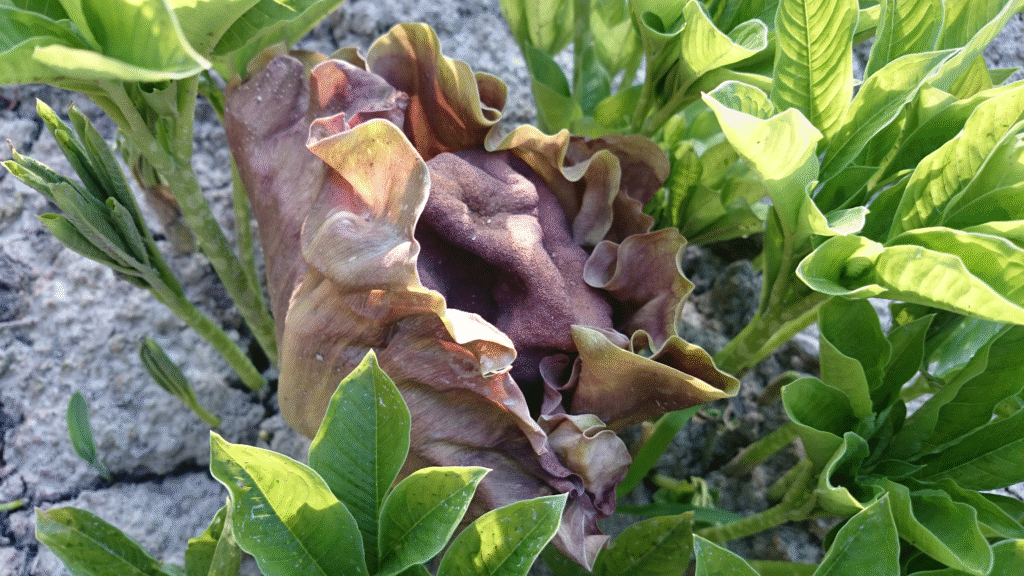
When to Harvest
Elephant yam typically requires 7-9 months from planting to harvest. Look for these signs of readiness:
- The leaf structure completely yellows and dies back.
- The soil around the base of the plant cracks.
- In container plantings, the corm may push up against the soil surface.
Harvesting Process
- Wait until the foliage has completely died back naturally.
- Carefully dig around the perimeter of where the corm should be, starting about 12 inches away from the stem.
- Gradually work inward and underneath to avoid damaging the corm.
- Lift the corm gently, dusting off excess soil.
Storage Methods
- Curing: Allow harvested corms to cure in a warm (around 80°F/27°C), dry place with good air circulation for 7-10 days.
- Long-term storage: After curing, store in a cool (50-60°F/10-15°C), dry location in mesh bags or paper boxes. Never use plastic containers as they trap moisture.
- Consumption timeline: Properly stored elephant yams can last 3-6 months.
- Replanting: Save some corms or corm pieces for replanting in the next growing season.
Culinary Uses for Elephant Yam
This versatile tuber can be prepared in numerous ways:
- Preparation note: Always cook elephant yam thoroughly, as raw consumption can cause irritation due to calcium oxalate crystals.
- Popular cooking methods:
- Boiling or steaming chunks for use in stews and curries
- Roasting pieces with olive oil and herbs for a side dish
- Frying thin slices for chips
- Incorporating into soups as a thickener
- Flavor pairings: Works well with strong flavors like garlic, ginger, chili, coconut milk, and curry spices.
The Growing US Market for Elephant Yam
Elephant yam has seen increasing popularity in the United States in recent years:
- Market growth: According to the USDA Foreign Agricultural Service, specialty vegetable imports, including tropical tubers like elephant yam, have increased by approximately 18% over the past five years.
- Culinary trend: With growing interest in international cuisines, particularly Southeast Asian and Indian cooking, elephant yam has found its way into more American kitchens.
- Health-conscious consumers: The tuber’s high fiber content and nutritional profile appeal to health-conscious consumers looking for alternative starchy vegetables.
- Local growing potential: While traditionally imported, more US gardeners in USDA zones 8-11 are successfully growing this crop, creating opportunities for local farmers’ markets.
Troubleshooting Common Growing Issues
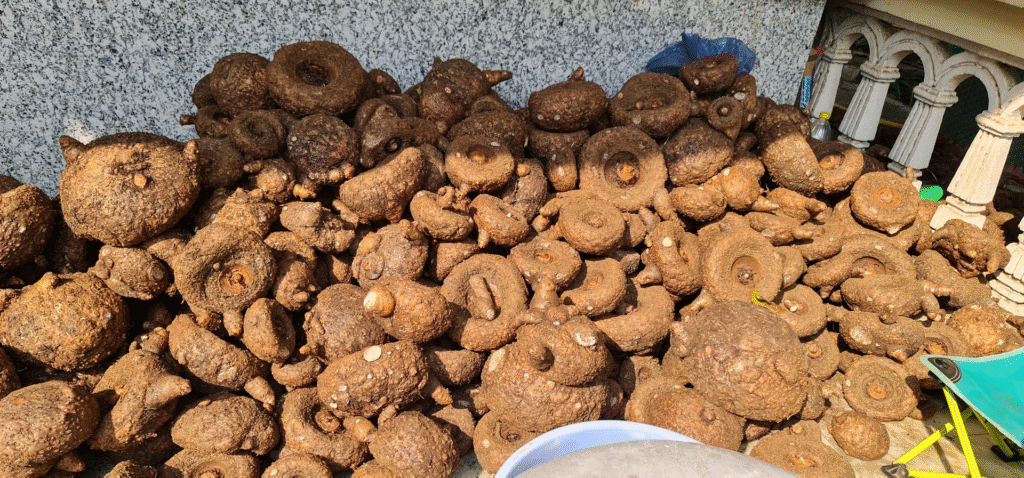
Plant Not Sprouting
If your elephant yam isn’t sprouting:
- Check corm quality and ensure it wasn’t damaged by frost
- Verify planting depth (may be too deep)
- Evaluate soil temperature (may be too cold)
- Consider dormancy period (may need more time)
Leaf Discoloration
For yellowing or browning leaves:
- Reassess watering schedule (both over and under watering can cause issues)
- Check for pest infestations on the undersides of leaves
- Evaluate light conditions
- Consider fertilizer burn if recently fertilized
Small Corm Development
If harvested corms are smaller than expected:
- The growing season may have been too short
- Container might have been too small
- Nutrient deficiency in soil
- Inadequate watering during critical growth periods
Conclusion
Growing elephant yam can be a rewarding experience that provides you with a unique ingredient for your culinary adventures. Whether you’re growing it in your garden, in containers, or even indoors, following the guidelines in this article will help you successfully cultivate this impressive plant. As interest in diverse, international ingredients continues to grow in the US market, having fresh elephant yam from your own garden puts you ahead of the curve. With proper care and attention to its specific needs, you’ll be harvesting your own elephant yams and discovering new ways to incorporate them into your cooking.
Remember that patience is key—elephant yam is a slow-growing crop that rewards gardeners willing to provide the right conditions and wait for the impressive results.
